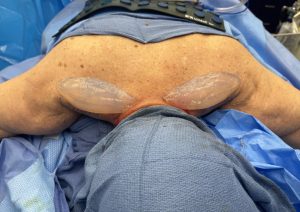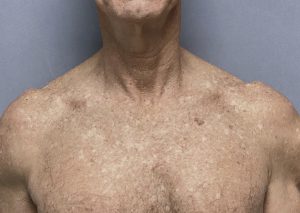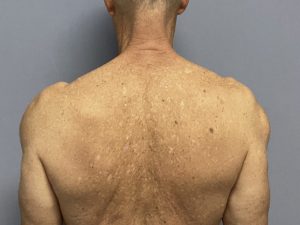Background: There are eleven (11) different muscle areas that can be aesthetically enhanced by implants in the body. (minus the face) In the upper body this includes the pectoral (chest), bicep and tricep (upper arm), deltoid (shoulder), brachioradialis (forearm) and trapezius. (upper back muscles) Of all of these muscle enhancement sites the trapezius is the most unique of them.
The trapezius muscle is a paired trapezoid-shaped superficial muscle of the upper back. Despite extending longitudinally from the back of the skull down to the lower thoracic vertebrae and out to the side to the scapula, it is most commonly recognized from the front view. This limited muscle area is what is seen to be increased in size by weight training and body builders although this represents just a small portion of the muscle’s surface area.
What makes the trapezius muscle unique from an implant augmentation standpoint are two features. First only a small portion of the muscle needed to be augmented to make a visual difference. (as seen primarily in the front view) Secondly it is not a gliding muscle so there is not a non-adherent connection between the enveloping fascia and the muscle, making subfascial implant placement difficult.
Case Study: This older male desired trapezius augmentation already having pectoral and bicep implants. (to be getting deltoid implants later) He was to to undergo combined tricep, trapezius and forearm implants.

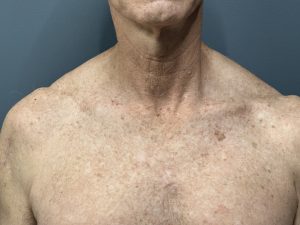
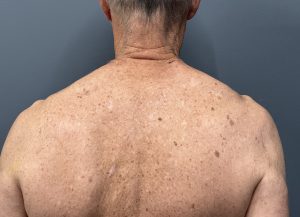
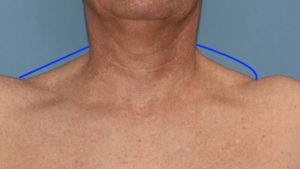
Key Points:
1) Augmentation of the trapezius muscle requires an implant placed in the suprafascial location.
2) Trap implants are done in the prone position intraoperatively.
3) There is a diverse shape to the enlarged trapeziums muscle which must be considered when choosing an implant shape/size.
Dr. Barry Eppley
World-Renowned Plastic Surgeon



